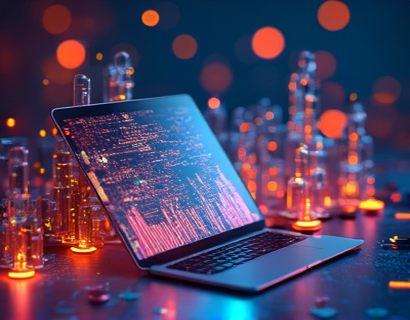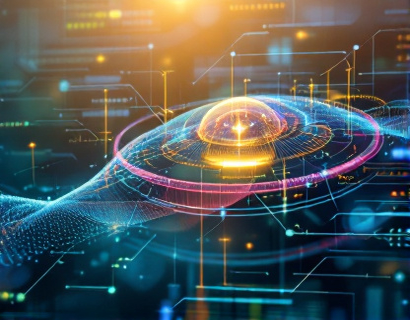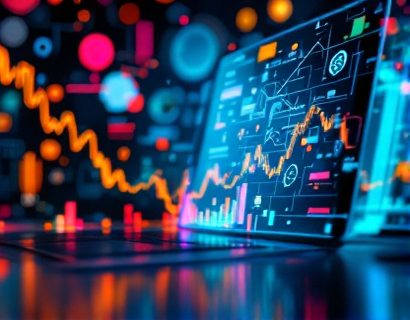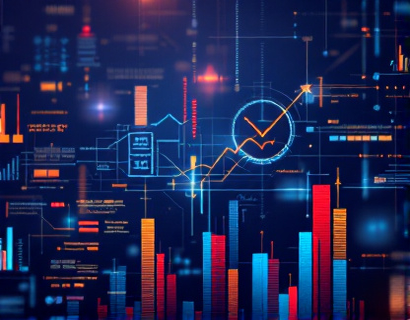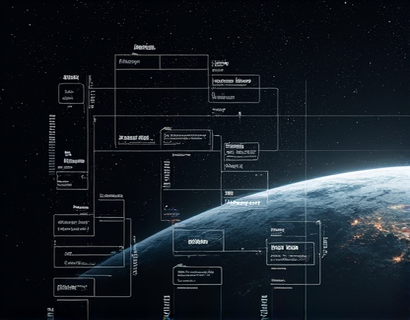AI and Crypto: A Synergistic Force Reshaping Digital Experiences
The intersection of artificial intelligence and cryptocurrency is giving rise to a new era of digital transformation, where the boundaries of technology are being redefined. This fusion is not just about combining two advanced fields but creating a synergy that enhances user experiences, secures transactions, and opens up new possibilities in the realm of connected technologies. As tech enthusiasts and innovators, understanding this integration is crucial for navigating the future of digital interactions.
The integration of AI and crypto is transforming how we perceive and interact with digital assets. AI algorithms are being employed to analyze vast amounts of data within the crypto ecosystem, providing insights that were previously unattainable. This data-driven approach enhances decision-making processes for investors, traders, and developers, leading to more informed and strategic choices. The ability to predict market trends, identify patterns, and automate trading strategies is revolutionizing the way people engage with cryptocurrencies.
Enhanced Security Through AI
One of the most significant benefits of integrating AI with cryptocurrency is the enhancement of security measures. Cryptocurrencies, by their nature, are vulnerable to various types of attacks, including hacking, phishing, and smart contract vulnerabilities. AI technologies, particularly machine learning and anomaly detection, are being utilized to create robust security protocols. These systems can detect unusual activities in real-time, predict potential threats, and respond proactively to mitigate risks. This not only protects user assets but also builds trust in the crypto ecosystem.
Moreover, AI-driven identity verification and anti-money laundering (AML) solutions are becoming increasingly sophisticated. By analyzing transaction patterns and user behavior, AI can identify suspicious activities and flag them for review. This proactive approach to security is essential in a space where fraud and illegal activities have been prevalent. The seamless integration of AI in security measures ensures that the crypto environment remains safe and reliable for all participants.
Smart Contracts and AI: A Powerful Combination
Smart contracts, self-executing contracts with the terms directly written into code, have been a cornerstone of blockchain technology. However, the addition of AI to smart contracts is taking this concept to the next level. AI can enhance the functionality and efficiency of smart contracts by enabling them to make decisions based on complex data inputs and real-time conditions. This means that smart contracts can adapt to changing circumstances, execute more intricate logic, and automate processes with greater precision.
For instance, in decentralized finance (DeFi), AI-enhanced smart contracts can optimize lending and borrowing processes, adjust interest rates based on market conditions, and manage risk more effectively. This not only streamlines operations but also opens up new opportunities for financial innovation. The combination of AI and smart contracts is paving the way for more intelligent, autonomous, and efficient financial systems.
Personalized User Experiences in Crypto
The integration of AI with cryptocurrency is also transforming the user experience by providing personalized services and recommendations. AI algorithms can analyze user preferences, behavior, and historical data to offer tailored suggestions for investments, wallet management, and security measures. This level of personalization enhances user engagement and satisfaction, making the crypto experience more intuitive and user-friendly.
For example, AI-powered chatbots and virtual assistants can provide real-time support and guidance to users, answering queries, explaining complex concepts, and assisting with transactions. These AI-driven tools can operate 24/7, ensuring that users receive immediate assistance whenever needed. The result is a more accessible and supportive crypto environment that caters to users of all skill levels.
Market Analysis and Predictive Insights
One of the most exciting applications of AI in the crypto space is its ability to provide deep market analysis and predictive insights. Traditional methods of market analysis rely heavily on human interpretation and can be limited by biases and errors. AI, on the other hand, can process and analyze vast datasets, identifying trends, correlations, and patterns that may not be immediately apparent. This data-driven approach enables more accurate predictions and informed investment decisions.
AI-driven analytics platforms can monitor multiple sources of data, including social media sentiment, news articles, and market indicators, to generate comprehensive insights. These platforms can also simulate various scenarios and forecast potential outcomes, helping users make more strategic choices. The ability to leverage AI for market analysis is a game-changer, empowering users to navigate the crypto landscape with greater confidence and precision.
Decentralized AI Applications
The integration of AI with blockchain technology is giving birth to decentralized AI applications, which promise to democratize access to AI capabilities. In this model, AI models and data are stored and processed on a decentralized network, ensuring transparency, security, and privacy. This approach eliminates the need for centralized control, reducing the risk of data breaches and ensuring that AI benefits a broader audience.
Decentralized AI applications can be particularly beneficial in the crypto space, where data privacy and security are paramount. Users can contribute their data to a decentralized network and receive rewards in cryptocurrency, creating a mutually beneficial ecosystem. This model not only fosters innovation but also promotes a more inclusive and equitable distribution of AI technologies.
Challenges and Considerations
While the integration of AI and crypto offers numerous advantages, it also presents several challenges that need to be addressed. One of the primary concerns is the regulatory landscape. The crypto industry is still navigating a complex web of regulations, and the introduction of AI adds another layer of complexity. Ensuring compliance with existing laws while fostering innovation requires a balanced and forward-thinking approach from regulators and industry stakeholders.
Another challenge is the technical hurdle of integrating AI with blockchain technology. Blockchain's decentralized and immutable nature can conflict with the centralized data processing required for AI algorithms. Developing solutions that maintain the integrity of the blockchain while enabling efficient AI computations is an ongoing area of research and development. Collaboration between AI experts and blockchain developers is essential to overcome these technical challenges.
Future Prospects
Looking ahead, the synergy between AI and crypto is poised to drive significant advancements in the digital landscape. As AI technologies continue to evolve, we can expect even more sophisticated applications in the crypto space. From enhanced privacy solutions to more efficient consensus mechanisms, the potential for innovation is vast. The integration of AI with other emerging technologies, such as quantum computing and the Internet of Things (IoT), will further expand the horizons of what is possible.
The future of digital experiences will be characterized by seamless integration, intelligent automation, and enhanced security. Users will benefit from more intuitive, personalized, and secure interactions with digital assets and services. The crypto ecosystem, empowered by AI, will become a more robust, resilient, and user-friendly environment, attracting a wider range of participants and driving broader adoption.
In conclusion, the fusion of AI and crypto is not just a technological trend but a transformative force that is reshaping the digital world. By leveraging the strengths of both fields, we can create a more secure, efficient, and innovative future. For tech enthusiasts and innovators, embracing this integration is key to staying ahead in the rapidly evolving landscape of connected technologies.













